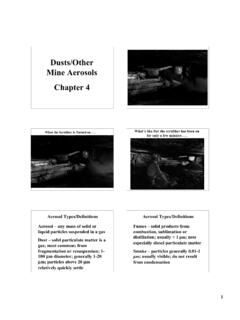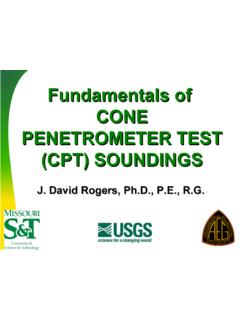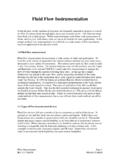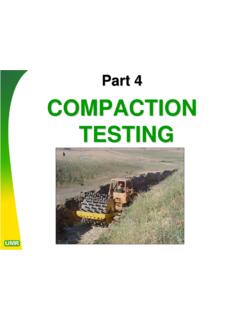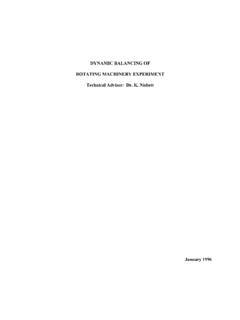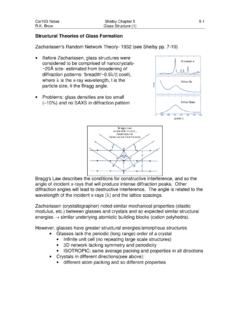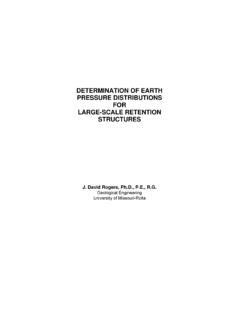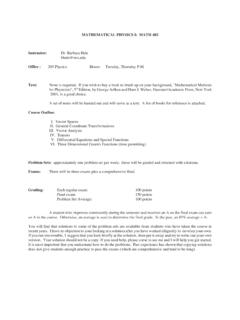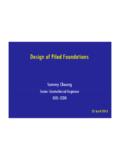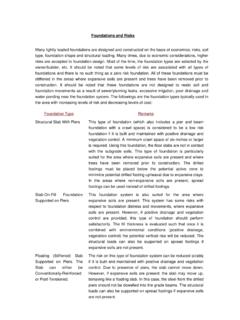Transcription of DAMAGE TO FOUNDATIONS FROM EXPANSIVE SOILS
1 DAMAGE TO FOUNDATIONS FROM EXPANSIVE SOILS J. David Rogers, Robert Olshansky, and Robert B. Rogers EXPANSIVE SOILS in many parts of the United States pose a significant hazard to FOUNDATIONS for light buildings. Swelling clays derived from residual SOILS can exert uplift pressures of as much as 5,500 PSF, which can do considerable DAMAGE to lightly-loaded wood-frame structures. Insurance companies pay out millions of dollars yearly to repair homes distressed by EXPANSIVE SOILS . EXPANSIVE SOILS owe their characteristics to the presence of swelling clay minerals.
2 As they get wet, the clay minerals absorb water molecules and expand; conversely, as they dry they shrink, leaving large voids in the soil. Swelling clays can control the behavior of virtually any type of soil if the percentage of clay is more than about 5 percent by weight. SOILS with smectite clay minerals, such as montmorillonite, exhibit the most profound swelling properties. Potentially EXPANSIVE SOILS can typically be recognized in the lab by their plastic properties. Inorganic clays of high plasticity, generally those with liquid limits exceeding 50 percent and plasticity index over 30, usually have high inherent swelling capacity.
3 Expansion of SOILS can also be measured in the lab directly, by immersing a remolded soil sample and measuring its volume change. In the field, EXPANSIVE clay SOILS can be easily recognized in the dry season by the deep cracks, in roughly polygonal patterns, in the ground surface (see Fig. 1). The zone of seasonal moisture content fluctuation can extend from three to forty feet deep (see Fig. 2). This creates cyclic shrink/swell behavior in the upper portion of the soil column, and cracks can extend to much greater depths than imagined by most engineers.
4 Foundation DAMAGE The most obvious way in which EXPANSIVE SOILS can DAMAGE FOUNDATIONS is by uplift as they swell with moisture increases. Swelling SOILS lift up and crack lightly-loaded, continuous strip footings, and frequently cause distress in floor slabs. Because of the different building loads on different portions of a structure's foundation, the resultant uplift will vary in different areas. As shown in Fig. 3, the exterior corners of a uniformly-loaded rectangular slab foundation will only exert about one-fourth of the normal pressure on a swelling soil of that exerted at the central portion of the slab.
5 As a result, the corners tend to be lifted up relative to the central portion. This phenomenon can be exacerbated by moisture differentials within SOILS at the edge of the slab. Such differential movement of the foundation can also cause distress to the framing of a structure. Figure 1: Polygonal pattern of surface cracks in the dry season. These cracks are approximately one inch wide at the top. Note sewer manhole in background. Figure 2: This crack is at least 32 inches deep. The yardstick was easily inserted to this depth; narrower, less straight cracks may extend much deeper.
6 Figure 3: A rectangular slab, uniformly loaded, will tend to lift up in the corners because there is less confinement. Figure 4: DAMAGE to home supported on shallow piers. (1) At the beginning of the rainy season, the piers are still supported by friction with the soil. When it begins to rain, water enters deep into the soil through the cracks. (2) After 5 to 10 large storms, the soil swells, lifting the house and piers. (3) In the dry season, the groundwater table falls and the soil dries and contracts. As tension cracks grow around the pier, the skin friction is reduced and the effective stress of the soil increases (due to drying).
7 When the building load exceeds the remaining skin friction, or the effective stress of the soil increases to an all-time high, adhesion is broken by this straining, and the pier sinks. Drilled pier FOUNDATIONS have been used in California, Colorado and Texas since the late 1950s to reduce EXPANSIVE soil DAMAGE . However, these types of FOUNDATIONS can also be adversely affected by EXPANSIVE soil behavior if the piers are not sufficiently deep. Frequently, the corner piers of a pier-supported structure are lifted up during swelling in the wet season, and then break their skin friction bond with the ground when the soil shrinks away from the pier in the following dry season (Fig.)
8 4). Loss of this "skin friction" decreases the pier's ability to support building loads. This straining to the soil can become great enough that the pier falls. To prevent this style of DAMAGE , the piers must be drilled well below the zone of seasonal moisture fluctuation, and they must be designed with the assumption that the upper portions of the pier will lose contact with the adjacent soil. Shallow pipes, especially plastic pipes, buried in the zone of seasonal moisture fluctuation, are exposed to enormous stresses by shrinking SOILS .
9 If water or sewage pipes break, then the resultant leaking moisture can exacerbate swelling DAMAGE to nearby structures. Concrete drainage devices can be adversely affected by EXPANSIVE SOILS (see Fig. 5). Swelling clays can lift and crack concrete ditches, seriously impairing their ability to convey runoff. Subsequent contraction may leave a void under the concrete, leading to piping and erosion as runoff flows under the ditch. Figure 5: Void created under concrete drainage interceptor ditch by contraction of clay SOILS .
10 EXPANSIVE SOILS pose the greatest hazard in regions with pronounced wet and dry seasons. The annual cycle of wetting and drying causes SOILS to shrink and swell each year. Thus, the arid regions of the country are much more susceptible to DAMAGE from EXPANSIVE SOILS than regions that maintain moist soil conditions throughout the year. The biggest problem in EXPANSIVE soil areas is that of differential water content. Sources of water in developed areas are not limited to temporal weather cycles, but can be introduced by people.

